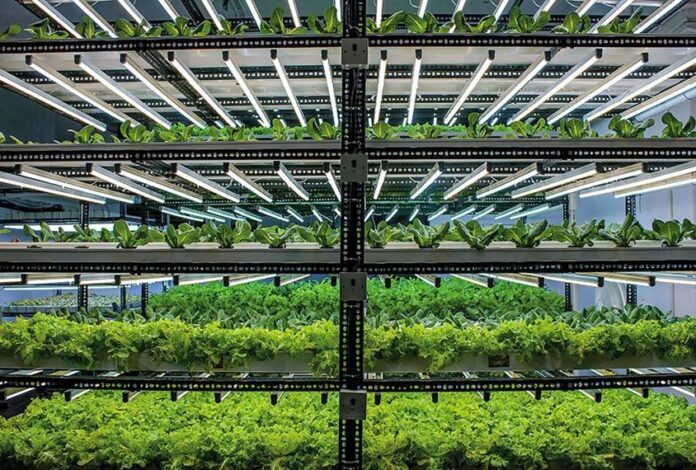Hydroponics, a modern agricultural technique, is projected to grow significantly with a forecasted CAGR of 13.4%, reaching a market value of US$ 29.7 billion by 2030 from US$ 12.3 billion in 2023 according to Persistence Market Research. It revolutionizes farming by eliminating soil and nurturing plants in nutrient-rich water solutions, aiming to optimize growth and yields. This method, employing systems like nutrient film and aeroponics, efficiently utilizes resources, reduces water wastage, and mitigates soil-borne diseases, contributing to sustainable agriculture.
The Hydroponics market addresses challenges posed by population growth and environmental issues by maximizing space efficiency and offering locally sourced, fresh produce, particularly appealing in urban areas. Its ability to optimize water usage aligns with the growing focus on sustainable agriculture. Advancements in technology, including affordability and ease of use, widen its adoption among farmers, while the integration of smart technologies and automation enhances productivity and scalability in the hydroponics sector.
Key market growth factors:
Population Growth and Shrinking Arable Land: With the global population increasing, there’s a greater demand for food production, yet available arable land is shrinking due to urbanization and environmental degradation. Hydroponics offers a solution by maximizing space efficiency and enabling cultivation in non-traditional environments.
Demand for Locally Sourced, Fresh Produce: There’s a rising trend towards consuming locally sourced, fresh produce, particularly in urban areas where transportation distances impact freshness. Hydroponics allows for the cultivation of crops closer to consumer markets, meeting this demand more effectively.
Focus on Sustainable Agriculture: As environmental concerns grow, there’s a heightened emphasis on sustainable agricultural practices. Hydroponics conserves water, reduces the need for pesticides, and minimizes soil erosion, aligning with the goals of sustainable agriculture and appealing to environmentally conscious consumers and producers.
Technological Advancements and Affordability: Continuous technological advancements in hydroponic systems have made them more affordable and easier to use, democratizing access to this farming method. This accessibility encourages more farmers to adopt hydroponics, further driving market growth.
Market Restraints
Initial Investment Costs: While the long-term benefits of hydroponic farming are significant, the initial setup costs can be a barrier for some farmers. Investing in infrastructure, equipment, and technology required for hydroponics may deter adoption, particularly for smaller-scale or resource-constrained operations.
Technical Knowledge and Training: Hydroponic farming requires a certain level of technical knowledge and expertise in crop management, nutrient solutions, and system maintenance. The learning curve can be steep for farmers transitioning from traditional methods, leading to hesitation or reluctance to adopt hydroponics without adequate training and support.
Dependency on Electricity and Technology: Hydroponic systems rely heavily on electricity to power pumps, lights, and climate control systems. Dependence on electricity makes hydroponic farms vulnerable to disruptions in power supply, increasing operational risks and costs. Moreover, reliance on technology for monitoring and automation introduces potential vulnerabilities to system failures or cyber-attacks.
Opportunities
Technological Innovation: Continued advancements in hydroponic technology present opportunities for enhanced efficiency, productivity, and scalability. Innovations in system design, automation, sensor technology, and data analytics can optimize resource utilization, improve crop yields, and reduce operational costs, driving market growth.
Vertical Farming and Urban Agriculture: The rise of vertical farming and urban agriculture presents significant opportunities for hydroponics. Vertical farming allows for the cultivation of crops in vertically stacked layers, maximizing space utilization in urban environments. Hydroponic systems are well-suited for vertical farming due to their soil-less nature and ability to deliver precise nutrients to plants, enabling year-round production of fresh produce close to consumer markets.
Expansion into New Geographies: Hydroponic farming is not limited by climate or soil conditions, offering opportunities for expansion into new geographic regions where traditional agriculture may be challenging or limited. By leveraging controlled environment agriculture (CEA) technologies, hydroponic farms can be established in diverse climates and environments, enabling local production of fresh fruits, vegetables, and herbs regardless of seasonal constraints.
Top Regional Markets
Europe leads the hydroponics market in 2023, driven by its focus on sustainable agricultural practices. The continent’s commitment to environmental stewardship and resource efficiency encourages the adoption of hydroponics, aligning with its goals of reducing environmental impact and ensuring food security. Hydroponics’ water-saving capabilities and controlled growth conditions complement Europe’s sustainability objectives, reinforcing its leadership in embracing advanced agricultural technologies. In contrast, the South Asia and Pacific region experiences rapid growth in the hydroponics market, fueled by factors like population growth, urbanization, and the need for sustainable food production. Limited arable land in this region prompts a shift towards modern, resource-efficient farming practices. The adoption of hydroponics reflects the region’s determination to overcome traditional farming constraints, ensuring food security, efficient land utilization, and sustainable agriculture amidst demographic and environmental challenges.
Key Recent Developments
Technological Advancements: Recent developments in hydroponic systems include advancements in automation, sensor technology, and data analytics, enhancing precision farming practices. These innovations optimize resource utilization, improve crop yields, and reduce operational costs for hydroponic growers.
Market Expansion: The hydroponics market has witnessed significant expansion into new geographic regions, driven by increasing demand for fresh produce and sustainable farming practices. Emerging markets in Asia, Africa, and Latin America are experiencing rapid adoption of hydroponic technologies, creating new growth opportunities for industry players.
Partnerships and Collaborations: Collaboration between hydroponic technology providers, agricultural input suppliers, and research institutions has accelerated innovation and market development. Partnerships along the value chain facilitate knowledge sharing, technology transfer, and the introduction of new products and services to meet evolving customer needs.









